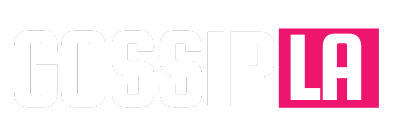Both times Brian Cashman had a team that resembled his current one, he recommended being a seller. His bosses didn’t take the advice in 2013. They did in 2016.
Outside executives said that the Yankees general manager was inquiring on a variety of scenarios. As one rival described it, “Taking inventory of who would be interested in what.” So the potential was that Cashman could still buy, sell or both before Tuesday’s 6 p.m. trade deadline.
Like a lot of clubs, even 65 percent of the way through the schedule, the Yankees are not fully comfortable defining an identity — contender or pretender. What is different from most clubs is Cashman has a lot of experience to draw upon, notably as the team’s GM since 1998. He has stood at the deadline with similar teams — middling won-loss results with bad offenses and a graying of core pieces.
In his time as GM, the three worst OPS-plus a Cashman Yankee team has had was 88 in 2013, 91 in 2016 and 94 in 2014. His team had just a 94 in going 55-39 through 104 games this year, in last place and eight out in the AL East and 3 ¹/₂ back in the wild card entering Sunday.
Throw out 2014 as a guidepost, not only because the league played down so that the Yankees were 54-50 through 104 games, but only one game out of a wild card and four out of first place. More vitally, it was Derek Jeter’s last season and Hal Steinbrenner was not going to surrender in that year. So the Yanks were low-impact buyers: Stephen Drew, Chase Headley, Brandon McCarthy and Martin Prado.
In 2013, the Yanks also were 54-50 after 104 games, in fourth place and eight out in the AL East and 7 ¹/₂ in the wild card. Their offense was similar to the 2023 Aaron Judge one-man band, with Robinson Cano as the lone force. Mark Teixeira had been hurt preparing for the WBC (shades of Edwin Diaz). Jeter, Curtis Granderson and Alex Rodriguez also missed substantial time with injury — and A-Rod would eventually be suspended near the end of that season for his involvement with Biogenesis.
The Yanks winning was based on Cano, two good starters (Andy Pettitte, Hiroki Kuroda) and a strong bullpen led by Mariano Rivera and David Robertson. But the roster was mainly dead weight as the Yanks tried to squeeze what was left out of guys like Travis Hafner, Lyle Overbay and Vernon Wells. So Cashman recommended selling Cano in his walk year with the Rangers particularly interested. But it was the last season for Rivera and Pettitte. Hal Steinbrenner was still relatively new and uncertain about running things and so the Yanks kept trying to win and acquired Alfonso Soriano, who had two good months left in him to help the Yanks play better, but not make the playoffs.
If I remember correctly, the Yanks had a fascination with a couple of the Rangers’ young pitchers, Robbie Ross and Tanner Scheppers. And even the Rangers’ consensus top three prospects were Jurickson Profar, Mike Olt and Luis Sardinas. The prospects who would have the best careers were, gulp, Joey Gallo and Rougned Odor. So even deciding to sell hardly means you get anything meaningful.


In 2016, the Yanks were 52-52 after 104 games, seven out of first and 5 ¹/₂ out of a wild card. But they already had decided by then that the aging offense of A-Rod, Headley, Teixeira, Starlin Castro, Jacoby Ellsbury and Brian McCann would never awaken. They already had traded Aroldis Chapman and notably Andrew Miller would go as well; and also Carlos Beltran and Ivan Nova.
Like in 2013, the Yanks played better late but didn’t make the playoffs. Gary Sanchez came up as an instant power force and Aaron Judge and Tyler Austin were promoted after A-Rod’s forced retirement. The Baby Bombers were formed, though as substantial as those deals were only Gleyber Torres had any lingering impact. Again, trading does not assure upgrades.
Cashman does not have collateral to trade like Chapman and Miller, though Clay Holmes and Michael King would net a lot in this market. But they are important to next year’s Yankees. I can see Cashman trying to thread a needle by, say, trading a walk-year player such as Harrison Bader to a team like the Marlins and/or using bullpen depth — a Ron Marinaccio type, especially with Jonathan Loaisiga so close to a return — as he seeks pieces that help not just now, but have control beyond this year. That would recognize this season is not an all-in year.
Steinbrenner probably sees huge investments in their prime, Judge and Cole, performing at their peaks and does not want to authorize a sell-off. He has matured as an owner, though, and does not just want to not sell or buy to stop the outside noise.
I could see after all of their years together, Steinbrenner and Cashman agreeing to find a middle ground. I think they will take a different path from 2013 and 2016. A little selling. A little buying with more than 2023 in mind — especially if they can long-term solve left field or third base.
Read more


















